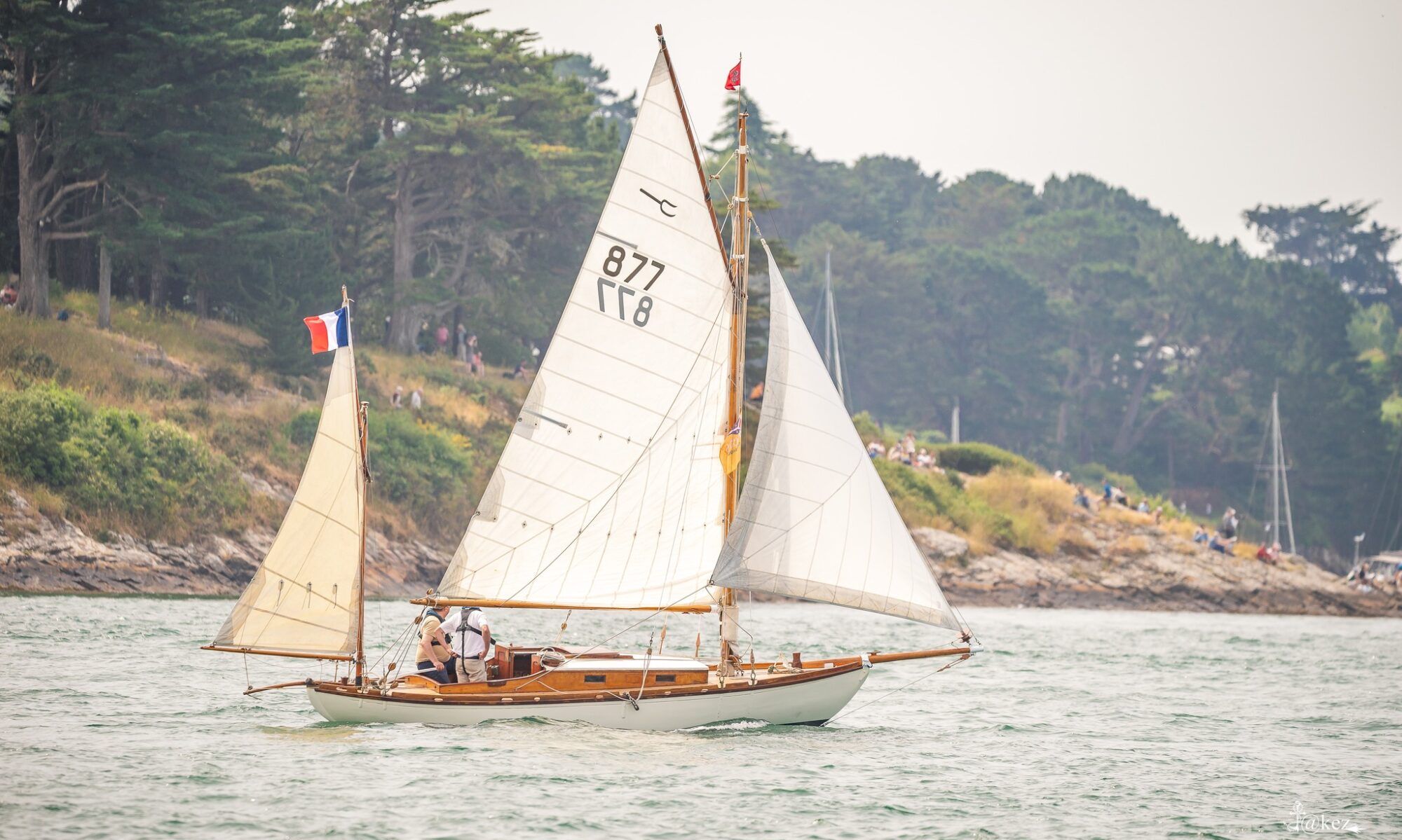Sure, boats are made for sailing, not to be pampered and treated like a chimney-piece.
Sheila has been sailed hard these days (but mostly gently) and she will get the fundamental maintenance she needs after the summer. Still I am trying to maintain her beauty, and, as Mike would put it “gild the lily” each time it is possible.
Here are a few enjoyable details :
Gold is back
Sheila got her cove-line back, in (almost solid) gold. I must pay tribute to Gérard d’Aboville, my neighbour, lover of “Lady Maud” and President of “Patrimoine Maritime et Fluvial” for helping me find out how to do it.

The helm also got a bit of gold paint, although I need to find a different formula.

Leather and bronze, rather than heavy metal
The support for the boom needed varnishing, but it was also damaging the deck. Now it is just beautiful.

It is so hard to remove everything stainless steel. Stainless steel is very useful, but is not period for Sheila. The same applies to cruciform screw heads. All the shackles (with very few exceptions) are now bronze again.
The main challenge was with the standing rigging and it was very conspicuous. The shackles and the eyes on the stainless steel shrouds were just too visible. A solution was to replace everything with dyneema. This would have looked much better than shiny cables while not being period either. Sheila has spent her allowance for this year so I made leather protections which are operating as covers.

Moving to running rigging, there are not many knots to tie on Sheila, as most of the lines are spliced. Still a figure of 8, a bowline or a clove hitch are common and essential. Less common, but the jib halyard will not be of any help without it is the sheep shank. I had to learn it again.

Going by the book
Sheila does not carry her name printed on the hull, It should be printed on the stern, along with the two letters AY for her new maritime quarter. There is an exemption for ships less that 7m (and so she is.) The penalty is up to 3.750€. In 1905, it was a Board of Trade requirement to have it at the bow and the stern but Sheila was not carrying her name either, on the basis of an 1898 exemption granted to Humber Yawl Club members, their boats being small and pointed on both ends. But are the French Authorities aware of this ?
The penalty for not carrying a plaque inside the cockpit with all the registration details that paper pushers have deemed compulsory is steep as well – 1500€. So Sheila compromised on this one.

Dressed up
You might have read already that Sheila sports a boom and a mizzen cover made by my friend Yvonnic and his team.
The handwriting for Sheila is Robert Groves’.

Yvonnic also gave me some leftovers of the fabric he used, which I stitched into a mast step collar to limit water ingress.

And finally, I decided to include an improvement. It is an improvement for me because I need a chart table for pilotage inside the Golfe. Even when you feel you know the place inside out, you always have to go back and check the chart from time to time. And without an echo sounder you want to be quick and not take too many chances. Mike was writing in 1979 ; “Like old houses the interiors of boats are a very personal thing and Sheila’s had changed over the years to suit the tastes of her major owner to whom her survival is entirely due.” This area I used for my chart table was taken by his Taylors Parafin cooker which did not survive to 2024, so it was already slightly different from the original Sheila interior setup. The crockery area was also carefully removed and stored for different times.

Greetings from France !
